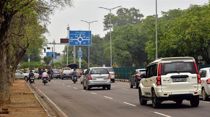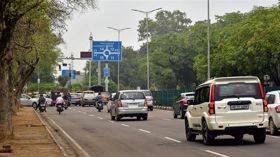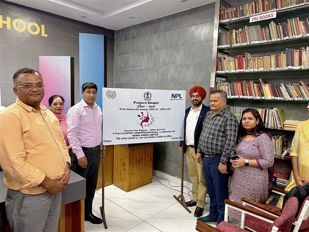
Armed forces had to be roped in to evacuate people last year. File
Aman Sood
Patiala, June 30
With monsoon round the corner, inhabitants of flood-prone villages on the banks of the Ghaggar have started shifting rations and potable water to the first floor of their houses.
Binder Kaur, 48, has started setting up a temporary kitchen on the first floor of her house at Gheura village. This is an annual drill for hundreds of residents of villages along the Ghaggar, a bane of the area.
National highway blockade a concern
- People living in many villages near Shambhu say with the onset of monsoon, most roads will be damaged
- With farmers blocking the national highway near Shambhu on the Punjab side and the Haryana cops blocking it on the other, the villagers fear the worst
- “If the Ghaggar rages, we will be stranded as the main highway that we usually use during monsoon is already blocked,” says a villager.
Flowing from the Shivalik hills, the seasonal river wreaked havoc in 2010 and 2023, besides causing damage almost every alternate year.
“We never feel safe living here (near Ghaggar), but there is nothing much we can do. Leaders and political parties have given assurances of solving our problems in the past but nothing concrete has been done. Floods can spoil our lives anytime during monsoon,” says Gurpreet Singh of Dharmherhi.
“Every monsoon, we move our rations and potable water to the first floor to survive in case of floods, which are quite common during this time of the year,” he says, adding they save up on dry fodder for cattle as well.
Hashampur Mangta village residents say most houses in their village have a second floor to protect them from floods. “Initially, most of the villagers resided on the ground floor, but after successive flooding caused damage to life and property, we constructed rooms, kitchen and bathrooms on the second floor,” says 70-year-old Niranjan Singh, who works as a carpenter.
Earlier, the river banks spanned nearly 500 metres at some places, ensuring unhindered flow of excess water, causing minimal damage. But with the passage of time, illegal structures started coming up along the river, obstructing the natural flow of water and causing excessive damage regularly.
“Illegal structures such as deras and illegal sheds have come up on the banks. In the absence of checks over the years due to political interference, the river sheet spread area has decreased considerably, causing flooding,” says Jaskaran Singh Sandhu, a former Chief Engineer with the Irrigation Department. “Illegal farming and mining in several villages have added to the problem,” he says.
While the district administration and Irrigation Department have started desilting work to clear the riverbed, villagers are not ready to take a chance. “Last year, the government had promised that ample arrangements had been made to safeguard our life and property, but we were hit by worst floods in years, washing away our entire paddy crop and 26 buffaloes,” recalls Gurdeep Singh from Ghanaur.
“While Haryana has raised a concrete wall along the banks to save its villages, Punjab needs to work on similar lines to protect its residents,” he adds.
Join Whatsapp Channel of The Tribune for latest updates.



























